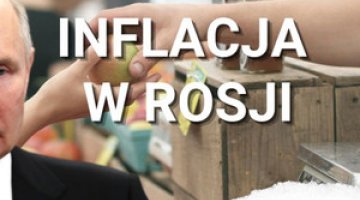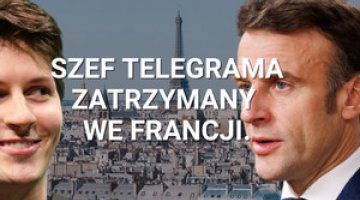Russia and Ukraine on the prospects for peace talks
Since September, signals from Russia that the threat of the Russian-Ukrainian war turning into a nuclear conflict have been intensifying. This might happen either through the use of tactical nuclear weapons in Ukraine or as a consequence of a direct armed clash between Russian and NATO troops. At the same time, in recent weeks, Moscow has repeatedly declared its readiness to hold talks with Kyiv without preconditions, while simultaneously questioning the sense of such negotiations by claiming that the administration of President Volodymyr Zelensky lacks agency, thus implying need for direct talks with Washington. At the same time, Russia has suggested that any negotiations must take into account “the reality that has formed at the moment”, which means that it regards the Russian sovereignty over the four annexed regions of Ukraine as non-negotiable.
The Russian campaign preceded the meeting at the G20 summit, before which Moscow had sought direct talks between President Vladimir Putin and President Joe Biden. the Kremlin stressed that the talks should concern not only the end of the war but also Russian demands for security guarantees formulated already in December 2021.
President Zelensky gave an online speech to the participants of the G20 summit in Indonesia on 15 November. In it he responded to Russia’s repeated calls for talks, stating that it is only a matter of time before the occupied Ukrainian territories are fully liberated. He rejected the idea of reaching a compromise at all costs or concluding another agreement similar to the so-called Minsk II accord, arguing that it would only be used to rebuild Russia’s military potential in order to resume military operations. Instead, Zelensky proposed a ten-point plan for an agreement that includes: the complete withdrawal of Russian troops, Russia’s recognition of Ukraine’s territorial integrity within internationally approved borders, punishing those guilty of war crimes, the payment of reparations, the indefinite extension of the agreement on the export of Ukrainian grain and introducing UN missions to critical energy infrastructure facilities in Ukraine. As part of the agreement, the Ukrainian state would be covered by international security guarantees that would prevent possible further Russian aggression against the country.
Commentary
- Moscow is counting that the West, fearing the risk of nuclear escalation will pressure Kyiv to re-start negotiations with Russia or will force the US to start talks with Russia about ending or at least freezing the war and about Russia’s demands for a ‘security guarantee’ made in December 2021. The Kremlin also hopes that Western governments, fearing escalation, will press Ukraine to limit the scope of its counteroffensive.
- The defeats on the military front are yet to have any major impact on the goals of the Russian campaign with regard to Ukraine and the West. Although the demand for ‘denazification’ disappeared from the list of objectives of the ‘special military operation’ this summer, this should only be read as a temporary softening of Moscow’s demands. The Kremlin still claims that Ukrainians are not a separate nation, and the Ukrainian state is an artificial construct which owes its existence to external sponsors. There are also no signs that Russia, despite further failures on the military front, is prepared to curtail its territorial claims, for example, by returning to the status quo from before 24 February this year.
- Russia’s demonstrative claims of its readiness for talks has two main objectives. Firstly, it is to maintain the conviction in the West that, despite everything, it might be possible to end the conflict on the basis of a negotiated compromise, and that the West should therefore refrain from tightening sanctions and continuing to provide military support to Ukraine, so as not to miss an opportunity. Secondly, by demonstrating its willingness to negotiate, Russia wants to maintain the ‘positive neutrality’ manifested to it by a number of countries of the Global South (especially India, Brazil, Mexico and South Africa), which have been stating that they are interested in ending the conflict as soon as possible.
- So far, Russia’s ‘peace probes’ have not had the desired effect in terms of Washington’s and Kyiv’s readiness to negotiate on the terms suggested by the Kremlin. Recently, Ukraine – most likely as a result of US pressure – has slightly softened its rhetoric and refrained from publicly ruling out the possibility of holding talks with the incumbent Russian president (this option was legally ruled out in Zelensky’s October decree prohibiting negotiations with Putin). Kyiv still makes any negotiations subject to the prior withdrawal of the Russian forces from all occupied Ukrainian territories and to the end of military operations. Thus clearly demonstrating its unwillingness to make any concessions. This uncompromising stance is supported by the very popular Commander-in-Chief of the Armed Forces, General Valeriy Zaluzhny, who stated on 14 November that “Ukrainian soldiers will not accept any negotiations, agreements or compromises”.
- Kyiv’s steadfast stance is strengthened by further successes on the front. In the government’s view, further progress by the Armed Forces of Ukraine contributes to gaining the best possible negotiating position before possible peace talks and will force Russia to give up the goals set by Putin. In this context, Mykhailo Podolyak, the adviser to the head of the Ukrainian Presidential Administration, stated that Russia “will be ready politically and psychologically for real negotiations” only after the liberation of Donetsk and Luhansk. The chairman of the Servant of the People party, Davyd Arakhamia, spoke in a similar spirit, stating that talks would be possible in the second half of 2023, when Putin will be forced to reach a truce before the presidential election in Russia.




